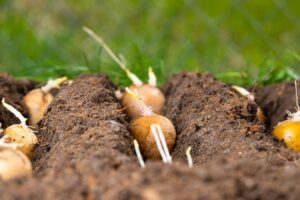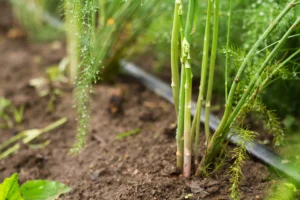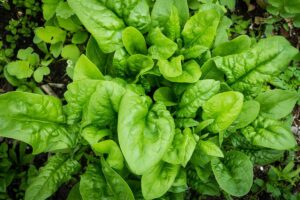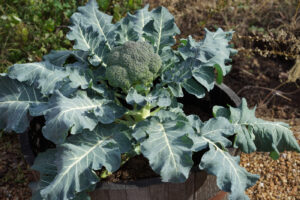How to Plant Beetroot: Complete Growing Guide
Are you looking to add a versatile, nutritious, and colorful vegetable to your garden? Beetroot (Beta vulgaris) might be exactly what you need. This root vegetable is not only delicious and packed with nutrients but also relatively easy to grow, making it perfect for gardeners of all experience levels. Whether you have a spacious garden plot, a modest backyard, or just a few containers on your patio, you can successfully grow beetroot with the right approach.
In this comprehensive guide, you’ll learn everything you need to know about planting, growing, and harvesting beetroot in various settings, from preparation to table. Let’s dig in and explore how you can cultivate this wonderful root vegetable at home.
Understanding Beetroot
Before diving into planting instructions, it’s helpful to understand what makes beetroot special and why it’s worth growing.
Beetroot, also commonly called “beets” in the US market, is a cool-season crop that belongs to the Amaranthaceae family. It’s prized for its colorful, nutrient-rich roots that come in vibrant red, golden yellow, white, and even striped varieties. According to the USDA Agricultural Research Service, beetroot is an excellent source of folate, manganese, potassium, fiber, and vitamin C.
One of the great things about growing beetroot is that the entire plant is edible. While many gardeners focus on the sweet, earthy-flavored roots, the tender greens can also be harvested and enjoyed in salads or cooked like spinach.
When to Plant Beetroot
Timing is crucial when it comes to planting beetroot. As a cool-season crop, beetroot thrives in moderate temperatures rather than extreme heat.
Planting Calendar for Different US Regions
| Region | Spring Planting | Fall Planting | Best Varieties |
|---|---|---|---|
| Northern US | 2-3 weeks before last frost (April-May) | Early August | Bull’s Blood, Detroit Dark Red |
| Central US | March-April | Late August-Early September | Chioggia, Cylindra |
| Southern US | February-March | September-October | Early Wonder, Golden |
| Pacific Northwest | March-April | August | Detroit Supreme, Ruby Queen |
| Southwest | February-March | September-October | Avalanche (white), Touchstone Gold |
For the most accurate planting dates specific to your area, you can consult the USDA Plant Hardiness Zone Map to identify your growing zone.

How to Plant Beetroot at Home (Container Growing)
Limited space? No problem! Beetroot adapts well to container growing, making it accessible even for apartment dwellers with just a balcony or sunny windowsill.
What You’ll Need:
- Containers at least 8-12 inches deep with drainage holes
- High-quality potting mix
- Beetroot seeds
- Watering can or hose with gentle spray
- Liquid organic fertilizer
Step-by-Step Container Planting:
- Prepare your containers: Fill your containers with potting mix to about an inch from the top. Water thoroughly and allow to drain.
- Sow the seeds: Plant beetroot seeds about ½ inch deep and 2 inches apart. You can plant them closer initially if you plan to thin them later.
- Water gently: After planting, water the soil gently to ensure good seed-to-soil contact without washing away the seeds.
- Placement: Position your containers where they’ll receive at least 6 hours of sunlight daily.
- Maintain moisture: Keep the soil consistently moist but not waterlogged. Container soil tends to dry out faster than garden soil, so you’ll need to check it frequently.
- Thin seedlings: Once seedlings reach about 2 inches tall, thin them to 3-4 inches apart to give roots room to develop.
- Feed regularly: Since nutrients in containers deplete more quickly, feed your beetroot plants with a balanced liquid organic fertilizer every 3-4 weeks.
How to Plant Beetroot in Your Garden
If you have a backyard garden, you can easily incorporate beetroot into your growing space. Garden-grown beetroot often produces larger yields and requires less frequent watering than container-grown plants.
Garden Preparation:
- Select the right location: Choose a spot that receives 6-8 hours of sunlight daily. Beetroot can tolerate partial shade but prefers full sun.
- Prepare the soil: Beetroot prefers loose, well-draining soil with a pH between 6.0-7.0. Work the soil to a depth of 12 inches, removing rocks and breaking up clumps.
- Enrich the soil: Mix in 2-3 inches of compost or well-rotted manure. Avoid fresh manure as it can cause forking in root vegetables.
Planting Process:
- Create rows: Make shallow furrows about ½ inch deep and 12-18 inches apart.
- Sow seeds: Place seeds about 1 inch apart in the rows. Cover lightly with soil and pat down gently.
- Water thoroughly: Water the planted area with a fine spray to avoid displacing seeds.
- Mulch between rows: Once seedlings emerge, apply a light layer of organic mulch between rows to conserve moisture and suppress weeds.
- Thin gradually: As seedlings grow, thin them first to 2 inches apart, then eventually to 3-4 inches apart. Don’t waste the thinnings – young beetroot greens are tender and delicious in salads!
How to Plant Beetroot in a Larger Plot
For those with more substantial growing space or market gardeners, planting beetroot in larger plots follows similar principles as garden planting but requires more attention to spacing and efficiency.
Large-Scale Planting Considerations:
- Soil testing: For larger plots, consider getting a professional soil test through your local extension office to identify any deficiencies that need correction. The USDA National Agricultural Library provides resources on soil health management.
- Crop rotation: If you’re working with a larger plot, implement crop rotation to reduce pest and disease issues. Avoid planting beetroot where other root crops or related plants (like spinach or chard) grew in the previous season.
- Efficient spacing: In larger plots, consider planting beetroot in beds 3-4 feet wide with rows spaced 15-18 inches apart to maximize space while allowing room for maintenance.
Mechanized Planting Options:
For very large plots, consider:
- Seed drills: These can space seeds evenly and at the correct depth, saving significant time.
- Precision seeders: These tools allow for more accurate seed placement and can reduce the need for thinning.
- Irrigation systems: Drip irrigation or soaker hoses can ensure consistent moisture with minimal labor.
Caring for Your Beetroot Plants
Regardless of where you plant your beetroot, proper care is essential for a successful harvest.

Watering Requirements:
Beetroot needs consistent moisture to develop sweet, tender roots. Irregular watering can lead to woody texture and cracking. Aim for about 1 inch of water per week, more during hot, dry periods.
Fertilizing Guidelines:
Beetroot is a moderate feeder but benefits from balanced nutrition:
- Before planting: Incorporate compost or aged manure into the soil.
- Mid-season boost: When plants are about 4-6 inches tall, side-dress with a balanced organic fertilizer (like 5-5-5) or compost tea.
- Avoid nitrogen-heavy fertilizers: Too much nitrogen promotes lush leaf growth at the expense of root development.
Pest and Disease Management:
Beetroot is relatively problem-free, but watch for these common issues:
- Leaf miners: These pests create tunnels in leaves. Remove and destroy affected leaves promptly.
- Aphids: Spray with a strong stream of water or insecticidal soap if infestations are severe.
- Cercospora leaf spot: This fungal disease causes circular spots on leaves. Improve air circulation and avoid overhead watering.
For sustainable pest management strategies, consider consulting the EPA’s Integrated Pest Management resources.
Harvesting Your Beetroot
The anticipation of harvest is one of gardening’s greatest rewards. Here’s how to know when and how to harvest your beetroot:
When to Harvest:
- Baby beets: These tender, sweet treats can be harvested when they reach 1-2 inches in diameter, typically 6-7 weeks after planting.
- Full-size roots: Most varieties are ready when they reach 2-3 inches in diameter, usually 8-10 weeks after planting.
- Greens: You can begin harvesting outer leaves when plants are 4-6 inches tall. Leave the inner leaves to continue growing.
Harvesting Technique:
- Loosen the soil around the roots with a garden fork, being careful not to damage the beetroot.
- Gently pull the beetroot out by gripping the tops close to the root.
- For storage, trim the tops to about 1-2 inches above the root (don’t cut the tops off at the root to prevent bleeding).
- Don’t forget to save those nutritious greens for cooking!
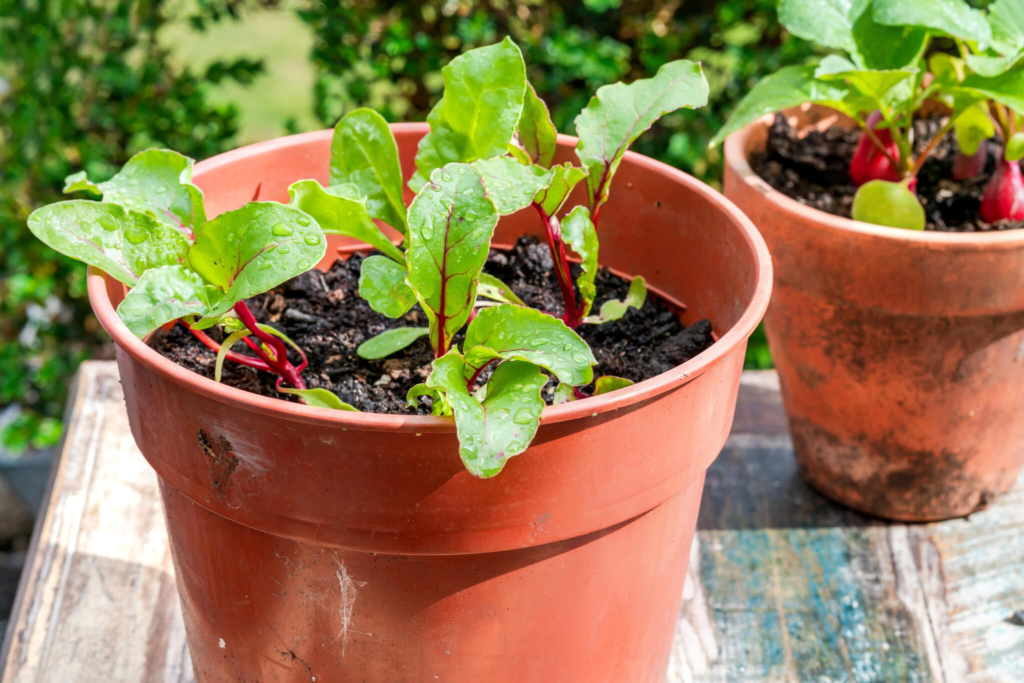
Storing and Using Your Beetroot Harvest
Your beetroot harvest can be enjoyed fresh or preserved for later use:
Short-term Storage:
- Remove tops (leaving 1-2 inches of stem).
- Brush off excess soil but don’t wash until ready to use.
- Store in the refrigerator crisper drawer in a perforated plastic bag for 2-3 weeks.
Long-term Storage:
- Root cellar: Store unwashed beetroot in boxes of slightly damp sand in a cool (32-40°F), humid place.
- Freezing: Cook, peel, and slice or cube beetroot, then freeze in airtight containers.
- Pickling: Beetroot preserves wonderfully as pickles, either alone or with other vegetables.
- Dehydrating: Slice thinly and dehydrate for beetroot chips or powder.
Common Issues and Troubleshooting
Even experienced gardeners encounter challenges. Here are solutions to common beetroot growing problems:
Woody or Tough Beetroot:
- Cause: Inconsistent watering, too-hot weather, or leaving in ground too long.
- Solution: Maintain even soil moisture and harvest at appropriate size.
Forked or Split Roots:
- Cause: Rocky soil, fresh manure, or inconsistent moisture.
- Solution: Prepare beds thoroughly, removing rocks and clumps. Use only well-composted manure.
Poor Germination:
- Cause: Old seeds, soil too cold, or planting too deep.
- Solution: Use fresh seeds and plant at the right time and depth.
Conclusion
Growing beetroot is a rewarding experience that can yield delicious, nutritious harvests whether you’re planting in containers, a garden bed, or a larger plot. By following the guidelines in this article, you’ll be well on your way to cultivating beautiful beetroot that can enhance your meals with vibrant color and earthy sweetness.
Remember that like any gardening endeavor, growing beetroot involves some trial and error. Don’t be discouraged by initial challenges—each growing season brings new learning opportunities and the chance to refine your techniques. Now that you’re equipped with knowledge about how to plant, grow, and harvest beetroot, it’s time to get your hands dirty and start growing this versatile vegetable.

